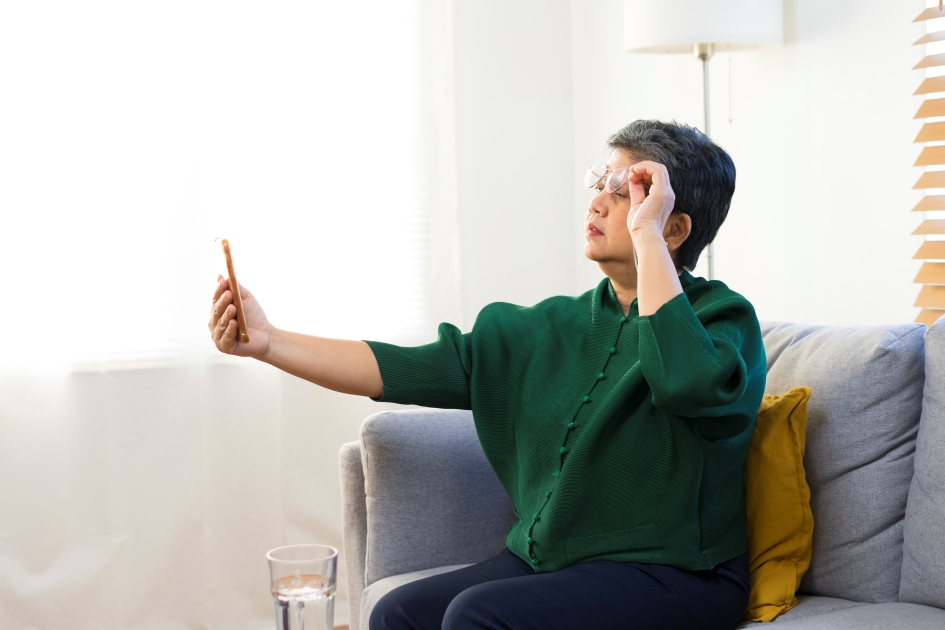
Common Age-Related Eye Problems
They say your eyes are the window to your soul, but they can also tell a lot about your overall health. As you age it is common to experience a weakening of your vision. You should pay close attention to your vision and visit an ophthalmologic professional once a year, or if you have any sudden changes to your eye health, especially if you are diabetic.
According to the Cleveland Clinic the most common age-related eye diseases are presbyopia, dry eyes, age-related macular degeneration, cataracts and temporal arteritis. It’s important to understand the symptoms and red flags of these diseases, no matter your age.
Presbyopia
The loss of ability to see close objects or small print. This is a normal process of aging and the reason that most people need reading glasses around 40-50 years of age.
Floaters and flashers
These are tiny specks that you may see float around in your field of vision. Floaters are normal but could be a sign of retinal detachment, especially if they are accompanied by light flashes. If you notice a sudden change in floaters or flashes, see your eye care professional as soon as possible.
Watery eyes (Epiphora)
Having too many tears can come from being sensitive to light, wind or temperature changes. Wearing sunglasses or eye protection outdoors can help. If you have excessive watering that can’t be helped with sunglasses or eye protection, it could be a sign of a more serious condition and you should seek assistance from an eye care professional.
Dry eyes (Keratoconjunctivitis sicca)
When your tear glands can’t produce enough tears, the result is dry eyes. Dry eyes can cause itching, burning and even some loss of vision. Adding a humidifier in your home may help as well as special eye drops that simulate tears. In more serious cases, surgical intervention may be required.
Cataracts
Cloudy developments in the front of the eye are cataracts. When cataracts develop, they prevent light from easily passing through to the retina, causing blurry vision. Cataracts usually come on gradually and cause no pain or discomfort. Some people may never require surgery for their cataracts, but if they become thick and large, removal surgery should be considered.
Glaucoma
Glaucoma is an eye condition caused by high pressure in the inside of the eye causing damage to the optical nerve. It is one of the leading causes of blindness in people over 60. Sudden vision loss, loss of peripheral vision (or tunnel vision), seeing halos around lights and pain in the eye and in the head are some of the first symptoms of glaucoma. If you are experiencing these symptoms, you should seek care from your eye care professional as soon as possible.
Age-Related Macular Degeneration (AMD)
AMD is the number one cause of vision loss in people over 50. It affects the central vision, so people with AMD can’t see anything directly in front of them. Over 10 million Americans suffer from AMD. Age and other health factors play a key role in developing age-related macular degeneration including:
- Family history
- Being overweight
- Smoking
- High blood pressure
- Diet (high saturated fat consumption)
- People of European descent
Click here for more detailed information on AMD.
